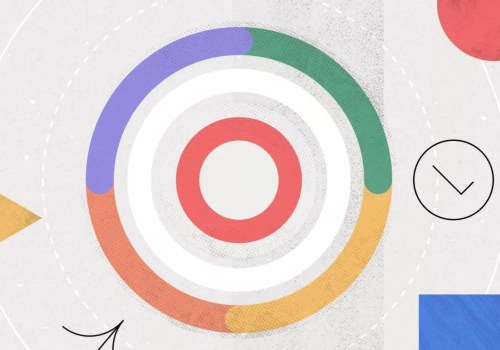By 2025, Virtual Reality Will Lead Marketing Trends. Customers will enjoy the incredible emotional experience when buying product brands with colorful and engaging advertising. They will come back again and again, increasing their loyalty to a product brand, possibly even more than chatbots. I Heart AMB A VIRTUAL EVENT FOR B2B SELLERS.
The new era of the 21st century has imposed an enormous obligation on entrepreneurs not only to be creative in providing content and marketing education courses, but also to target applicable customers through successful touchpoints. 75% of companies using AI and machine learning improve customer satisfaction by 10%, according to Forbes survey. The main job of marketing managers is to evaluate various tools to deliver more interactive, engaging and personal experiences to their customers. Over the past few years, virtual reality has become the most efficient and competent solution.
Solving privacy issues, increasing transparency regarding robot identification and building consumer trust are some of the crucial regions where the potential of. Like any fledgling technology, there will be some challenges, learning and difficulties in adoption. However, by 2025 we expect to find some revolutionary instances of blockchain use. Keep reading to learn more about 12 marketing trends that will change in the coming years.
“TikTok” searches have increased 173% in two years. It is one of the fastest growing social platforms and has more than 1 billion users worldwide. “TikTok” ad searches have increased by 203% in two years. A college student created a dance video using audio from one of the company's YouTube ads, and the company saw its TikTok following increase by 481%.
Now, he has more than 10 million followers. Searches for “AI marketing” have increased 130% in the past year. More than 36% of consumers say they want a more personalized shopping experience, but “data debt is a problem. The company's “recommended” algorithm is so accurate that 80% of the viewing options come from its recommendations and only the remaining 20% of the views come from a subscriber search.
While there are several ways to personalize digital marketing efforts, only 10% of companies use any personalization strategy beyond that. Rise of Personalized Commerce study showed that 70% of companies using AI personalization reported a 200% ROI. Searches for “Instagram shopping” have increased by 5,400% in 10 years. A large study showed that 36% of users follow brands and companies in the app.
Instagram itself reports that more than 200 million users visit at least one company profile daily. A survey showed that 29% of businesses spend most of their social ad budget on Instagram. More than 20% of respondents also said they see the best ROAS on Instagram. Searches for “influencer marketing” have increased 383% in the last five years.
For example, Dunkin' Donuts' partnership with TikTok influencer Charli D'Amelio resulted in a 20% increase in cold beer sales and a 57% increase in downloads of the Dunkin' Donuts app. Dunkin' Donuts campaign reached more than 1 million people on Instagram and earned a 5.2% engagement rate. Searches for “micro influencers” have increased by 300% in the last five years. However, a recent study found that 93% of marketers agree that consumers do trust content created by real people.
Searches for “Wayfair” increased during the first few months of the pandemic and increased by 1,200% in the last 10 years. HubSpot has named video marketing as “one of the most important, if not the most important marketing trends today, and probably for the next 5 to 10 years. Visual representation of the State of Video Marketing Survey (202) Wyzowl reports 91% of marketers say video is more important to businesses in light of the pandemic. According to a SEMrush report, posts that don't contain video content get 92% less traffic and 24% fewer shares than a post with at least one video.
In a study of 500 marketers, 93% reported getting a new customer because of a video post on social media. Search interest in “Google Lens” has been steadily increasing, increasing by 725% in the last five years. And one study reported that 35% of marketers planned to optimize visual search over the next year. Millennials, especially, want visual search capabilities: 62% want to use them more than any other new technology.
Google can recognize more than 2.5 billion objects. Search volume for “YouTube ads” has grown 82% in the last five years. The Social Media Examiner reports that 52% of marketers use YouTube today and more than half of marketers want to learn more about YouTube ads. Digital marketers using YouTube ads have the potential to reach 1.7 billion unique visitors each month.
Grammarly, a cloud-based typing assistant with 30 million users, recently used YouTube's full-funnel ad strategy with a dual focus on long-term brand building and acquiring new customers. The result was a 9% higher ROI compared to recognition advertising alone and a 13% increase in conversions with the same ad budget. The campaign was able to reach 1 in 4 American adults in just one month and conversion rates increased by 7.5%. Nearly three-quarters of Americans are “very concerned” or “extremely concerned” about their online privacy and 42% of people don't feel comfortable receiving personalized ads.
A recent Google survey showed that 73% of people use online tools to protect their privacy. McKinsey suggests that companies that can't land on an effective data strategy could end up paying up to 20% more in marketing and sales to drive the same results. Search Engine Journal reports 36% of marketers say customer purchase history data will be the most valuable first-hand data in the future. Other valuable data sources include social media profiles, website registrations, survey responses, and mobile app usage.
In simple terms, the metaverse has been described as a “3D version of the Internet”. Statistics show that individuals of this generation spend twice as much time interacting socially in the metaverse as in real life. A third of this generation wants brands to develop virtual stores and another 30% were open to brands that sell masks and clothing for avatars. More than 19 million people visited the space.
Abode Survey Finds 61% of U.S. Consumers Say Diversity in Advertising Matters. Another study found that brands with the highest diversity scores have 83% higher consumer preference. However, only 29% of non-white people believe their race is accurately represented in advertising.
When asked which media represents the greatest diversity in advertising, 43% of consumers said that the television network. Only 20% said on social media and only 9% said in digital ads. The campaign was a huge success, especially on social media. It produced 315 million impressions and 2 million interactions.
In a survey of B2B marketers, 82% say AI chatbots are a valuable asset in their current sales and marketing strategy. WhatsApp, a platform with 2 million users worldwide, is one of the most popular ways companies implement chatbots to achieve their marketing goals. There are more than 300,000 active chatbots on Messenger and more than 8 billion messages are sent between businesses and consumers every month. WyreStorm increased revenue by 300,000 and reduced costs by 75% by automating processes with HubSpot.
How is this possible if HubSpot is an additional expense?. Marketers can use the app platform to share reminders with customers, take advantage of cross-sell opportunities, and offer hyper-relevant promotions. That's why Forbes predicts that interactive content, such as quizzes and personality tests, will be an upcoming marketing trend. Nearly 90% of marketers agree that there is room for growth when it comes to using various images in marketing campaigns.
Obviously, in the midst of these rapidly evolving marketing trends and consumer expectations, conventional marketing rules and dictates are no longer holding firm. Companies that want to take their video marketing to the next level are getting help from companies like Vidyard. Dukin' recently partnered with several micro-influencers, demonstrating that companies using this marketing strategy use different influencers for different purposes. Many marketers are betting on voice assistants to be the future of marketing, allowing contextual interactions with users and customers.
In short, “What for Everyone, Personalized” is the headline that will evolve future marketing and advertising trends. Many brands are also partnering with minority-owned businesses to make their marketing more inclusive. From enabling accurate, real-time analysis and measurement, optimizing product line and pricing strategy, to improving customer experience and support, artificial intelligence and machine learning have brought tremendous advantages to the marketing world. Shared office rentals and coworking spaces will be popular ways to bring sellers together on their own terms.
Wyzowl reports 91% of marketers say video is more important to businesses in light of pandemic.






